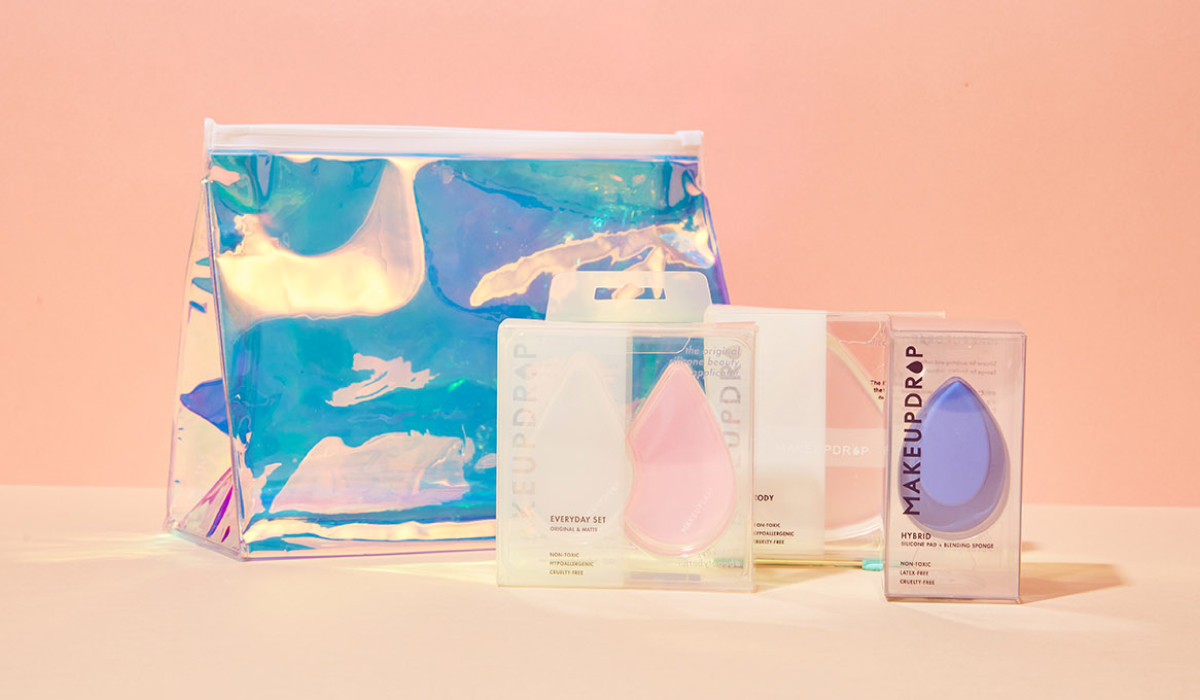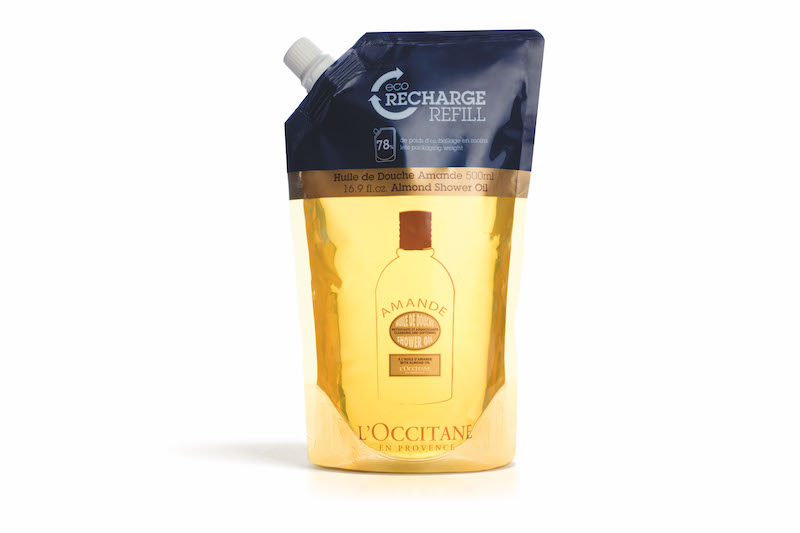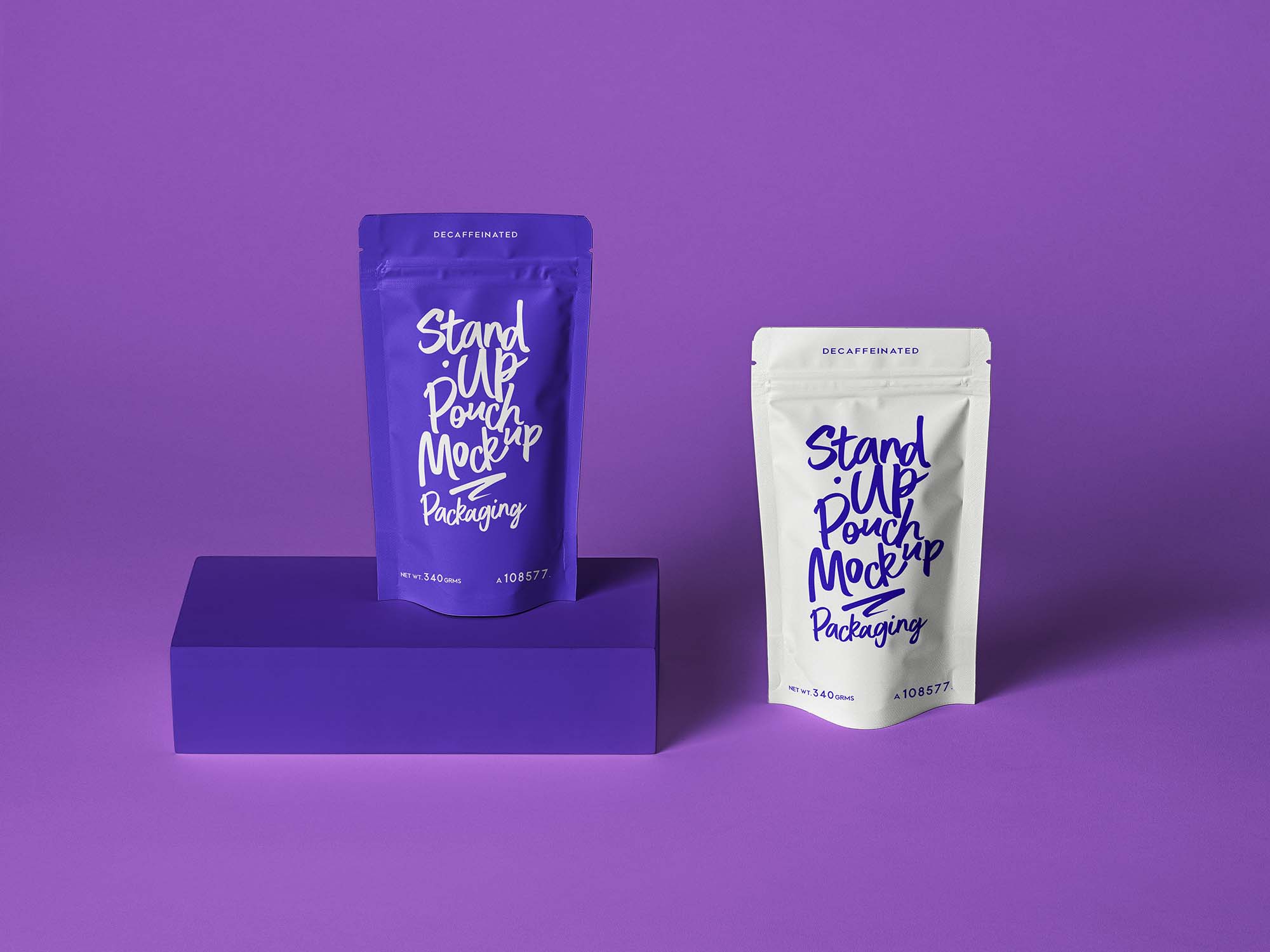Finding the right cosmetic packaging is more than just putting your product in a container; it’s about brand identity, customer experience, and product protection. For businesses looking to scale, sourcing wholesale cosmetic packaging is key to managing costs and ensuring a consistent supply. This guide dives deep into the world of cosmetic containers, exploring bottles and jars, various packaging solutions, the benefits of wholesale purchasing, and how to find reliable cosmetic packaging supplies, especially when considering overseas manufacturing. Whether you’re launching a new skincare line or expanding your existing range of cosmetic products, understanding your packaging needs is crucial for success. This article will provide valuable insights for decision-makers like Mark Thompson, focusing on quality, innovation, and cost-effectiveness.
Why is High-Quality Cosmetic Packaging Crucial for Your Brand?
In the crowded beauty marketplace, your cosmetic packaging is often the first interaction a potential customer has with your brand. It’s a silent salesperson sitting on the shelf, communicating your brand’s values, aesthetic, and promise of quality. A well-designed package not only needs to be attractive but must also effectively protect the cosmetic formulation within – safeguarding it from contamination, degradation from light or air, and physical damage during transit and handling. Think of it as the armor and the ambassador for your precious serum, lotion, or eyeshadow.
High-quality packaging solutions build trust and perceived value. A flimsy bottle or a cap that breaks easily can instantly diminish a customer’s perception of even the most premium cosmetic product. Conversely, sturdy materials, thoughtful design, and reliable dispensing mechanisms (like a smooth pump action or a secure twist-up tube) enhance the user experience, reinforcing the quality of the product inside. This attention to detail in the cosmetic container signals to the consumer that the brand cares about every aspect of their experience, fostering loyalty and encouraging repeat purchases. For procurement managers like Mark Thompson, ensuring this level of quality consistently across large orders is paramount.
Furthermore, the package plays a vital role in functionality. Does the container allow for easy and complete dispensing of the product? Is the size convenient for travel or home use? Does the fine mist sprayer provide the desired application? These functional aspects directly impact customer satisfaction. Investing in superior cosmetic packaging supplies isn’t just an expense; it’s an investment in your brand image, product integrity, and ultimately, your bottom line. It ensures your cosmetic products not only look good but perform flawlessly from first use to last drop.

What Types of Cosmetic Containers Should You Consider for Your Products?
Choosing the right cosmetic container depends heavily on the product formulation, desired application method, brand positioning, and target audience. The options are vast, ranging from classic glass bottles and jars to versatile plastic bottles and innovative airless bottles. Glass bottles often convey a sense of luxury and are excellent for preserving sensitive formulations like essential oil blends or high-end serums, though they can be heavier and more fragile. Plastic bottles, available in materials like PET, HDPE, and polypropylene, offer durability, lighter weight, and flexibility in design and size, making them suitable for lotions, shampoos, and cleansers.
Cosmetic jars, both glass jars and plastic versions (including double wall jars for a more substantial feel), are ideal for creams, balms, scrubs, and masks where scooping or dipping is the preferred method of access. Consider the closure as well – options range from simple screw caps to specialized dispensing caps, droppers, or pumps. For products like lip gloss or concealers, specialized tubes with applicators are necessary. The type of cap or closure is just as important as the bottle itself, ensuring a secure seal and appropriate dispensing.
Airless packaging solutions represent a significant advancement, particularly for sensitive skincare products. Airless bottles utilize a pump system that prevents air from entering the container, protecting the formulation from oxidation and contamination, potentially extending shelf life and reducing the need for preservatives. Tubes, both traditional squeeze tubes and twist-up designs, are popular for creams, gels, and targeted treatments. Selecting the appropriate cosmetic container requires careful consideration of the product’s compatibility with the material and the desired user experience. Offering a variety, like both bottles and jars, within a product line can cater to different customer preferences.
How Can Wholesale Cosmetic Packaging Benefit Your Business Model?
Purchasing cosmetic packaging on a wholesale basis is a cornerstone strategy for businesses aiming for profitability and scalability in the cosmetic industry. The most immediate benefit is cost reduction. Buying containers, bottles, jars, and closures in bulk significantly lowers the per-unit price compared to small-quantity orders. This cost efficiency directly impacts your product margins, allowing for more competitive pricing or higher profit retention – a key factor for company owners focused on the bottom line. Accessing packaging wholesale suppliers, especially manufacturers, cuts out intermediary costs.
Beyond savings, wholesale purchasing ensures consistency across your product line. When you order a large quantity of a specific bottle or jar from a single batch, you minimize variations in color, size, or quality that can sometimes occur between different production runs. This consistency is crucial for maintaining brand integrity and meeting customer expectations. Reliable wholesale cosmetic packaging suppliers often have robust quality control processes, which is essential when dealing with large volumes.
Partnering with a wholesale cosmetic packaging manufacturer also opens doors to greater customization and a wider range of cosmetic options. While standard bottles might be ready to ship, wholesale suppliers are better equipped to handle requests for specific colors, finishes, or even unique mold designs for larger orders. This allows brands to create truly distinctive packaging that stands out. Furthermore, establishing a relationship with a leading wholesale distributor or factory simplifies procurement, streamlines logistics, and ensures a steady supply chain for your packaging needs, preventing production delays.

What are the Key Cosmetic Packaging Solutions Available Today?
Modern cosmetic packaging solutions go far beyond simple containment; they incorporate innovative features for enhanced functionality, user experience, and product protection. Dispensing systems are a major area of innovation. Airless pump technology, as mentioned, is a prime example, protecting sensitive formulations. Various pump types exist, including lotion pumps designed for thicker creams, treatment pumps for precise dosages of serums, and fine mist sprayers for toners and fragrances. The goal is to dispense the product effectively and hygienically.
Material science also plays a huge role. Beyond traditional glass and plastics (PET, HDPE, PP, acrylic), there’s a growing demand for sustainable options. PCR (Post-Consumer Recycled) plastics are increasingly common, reducing reliance on virgin resources. Bioplastics derived from plant sources and materials designed to be easily recyclable or even compostable are emerging cosmetic packaging solutions. For instance, brands seeking 100% Green Types of Sustainable Food Packaging Flexible Pack often look for similar innovations in cosmetic applications. The choice of material impacts not only sustainability but also the package‘s look, feel, and compatibility with the cosmetic formula.
Functionality extends to the design of the container itself. Double wall jars offer insulation and a luxurious feel. Innovative shapes and ergonomic designs improve handling. Tamper-evident seals and child-resistant closures provide safety and security. Smart packaging integrating QR codes or NFC tags for enhanced consumer engagement is another cutting-edge trend. Ultimately, the best cosmetic packaging solutions seamlessly blend aesthetic appeal, functional performance, product protection, and increasingly, environmental responsibility.
Where Can You Find Reliable Cosmetic Packaging Supplies and Manufacturers?
Identifying trustworthy cosmetic packaging supplies requires diligent research and vetting. For businesses like Mark Thompson’s, which often source from developing countries, platforms like Google search and industry exhibitions are primary starting points. Online directories and B2B marketplaces (like Alibaba, Thomasnet) list numerous suppliers, but it’s crucial to look beyond the initial listing. Investigate the manufacturer‘s website, check their catalog, look for certifications (ISO, food safety compliance if relevant), and read reviews or case studies if available.
Industry trade shows and exhibitions are invaluable. They offer the opportunity to meet suppliers face-to-face, examine packaging samples (bottles, jars, pumps, caps) firsthand, and discuss specific packaging needs in detail. This direct interaction helps gauge a supplier’s professionalism, expertise, and understanding of market trends, particularly regarding quality expectations in markets like the USA and Europe. It’s also a chance to discover new packaging solutions and sustainable innovations. Allen, representing his China-based factory at exhibitions, connects directly with potential clients like Mark this way.
Don’t overlook referrals and industry networks. Talking to other brands (perhaps non-competitors) or consultants can yield recommendations for reliable packaging supplier partners. When evaluating potential suppliers, inquire about their manufacturing capabilities, quality control processes, lead times, minimum order quantities, and experience exporting to your target market. Requesting samples or even a small trial order (prototype) before committing to a large bulk purchase is a wise step to ensure the cosmetic packaging meets your brand‘s standards. A good cosmetic packaging supplier will prioritize clear communication and excellent customer service.
Navigating the World of Cosmetic Bottle Manufacturing: What to Know?
Engaging directly with a cosmetic bottle manufacturer offers significant advantages, particularly for achieving customization and cost-effectiveness on larger orders. However, understanding the manufacturing process is key. Different materials involve different techniques: glass bottles are typically molded, while plastic bottles can be produced through various methods like injection molding, blow molding, or injection stretch blow molding, each suited to different shapes, sizes, and plastic types (PET plastic, HDPE, etc.).
Quality control is paramount in bottle manufacturing. This includes checks for dimensional accuracy (ensuring the bottle fits its cap perfectly), material consistency, structural integrity (no weak spots or leaks), and visual perfection (no scratches, smudges, or color inconsistencies). Discuss the manufacturer‘s quality assurance protocols in detail. Do they adhere to industry standards? What testing do they perform? Understanding this builds confidence, especially when sourcing overseas where direct oversight is limited.
Communication and collaboration are crucial. Clearly define your specifications: material type, bottle size and shape, neck finish (to ensure compatibility with your chosen cap or pump), color, and any desired surface treatments or printing. Provide detailed artwork if custom cosmetic packaging is required. Inquire about lead times for mold creation (if needed) and production runs. Factor in shipping time as well. Building a strong partnership with your bottle manufacturer, based on clear expectations and open communication, is essential for a smooth process from design to delivery. Look for manufacturers with years of experience, particularly in serving your market.
Is Sustainable Cosmetic Packaging (PCR) a Viable and Important Option?
Absolutely. Sustainable cosmetic packaging is no longer a niche trend but a growing expectation among consumers and a responsible choice for brands. Environmental concerns are increasingly influencing purchasing decisions, and packaging plays a significant role. Using materials like PCR (Post-Consumer Recycled) content is a highly viable way to reduce environmental impact. PCR plastic reuses materials already in circulation, diverting waste from landfills and lessening the demand for virgin plastic production, which relies on fossil fuels. Many cosmetic bottles and jars can now be made with significant percentages of PCR content without compromising performance or aesthetic.
Beyond PCR, other sustainable options include:
- Recyclable Materials: Choosing materials like PET, HDPE, glass, and aluminum that are widely accepted in recycling streams. Clear labeling with recycling symbols helps consumers dispose of the package correctly.
- Lightweighting: Designing containers to use less material overall without sacrificing structural integrity.
- Refillable Systems: Offering products in durable primary containers (bottles, jars) with options to purchase refills in simpler, often flexible, packaging (like the 2023 Fast Shipping Suction Packaging Flexible Pouch For Adults).
- Bio-based Plastics: Materials derived from renewable resources like corn or sugarcane.
- Mon-material Design: Creating components (e.g., bottle and pump) from the same type of plastic to simplify the recycling process.
While sustainable options might sometimes have a slightly higher upfront cost or require more thorough compatibility testing, the long-term benefits for brand reputation, customer loyalty, and environmental responsibility are substantial. Companies like Allen’s factory are increasingly offering eco-friendly materials and designs, recognizing the demand from clients like Mark Thompson who cater to environmentally conscious markets. Integrating sustainable cosmetic packaging is becoming essential for future-proofing a brand.
How Does Customization (Label, Printing) Elevate Your Cosmetic Package?
Customization transforms a standard cosmetic container into a unique representation of your brand. It’s how you tell your story, convey your aesthetic, and capture attention on a crowded shelf. Label application and direct printing are the primary methods for adding branding, product information, ingredients lists, and regulatory symbols to your package. A well-designed label or print job enhances visual appeal and reinforces brand identity, making the product instantly recognizable.
Printing directly onto bottles, jars, or tubes offers a seamless, high-end look. Techniques like screen printing, hot stamping (for metallic effects), and digital printing allow for vibrant colors, intricate designs, and various finishes (matte, gloss). Custom color matching ensures the package aligns perfectly with your brand palette. This level of integration can make the cosmetic packaging feel more premium and cohesive. Consider exploring options like the 15KG Olive Green Packaging Flexible Pack Plastic Bag Pouch for inspiration on unique color integration, even in flexible formats.
Labels offer flexibility and are often a cost-effective solution, especially for smaller batches or when frequent design updates are needed. They can be made from various materials (paper, plastic films) with different adhesives and finishes. A skilled design team can create label designs that wrap elegantly around bottles or fit perfectly onto jar lids. Ultimately, whether through direct printing or labeling, customization allows you to create custom packaging that resonates with your target audience, differentiates your cosmetic products, and elevates the overall customer experience. Don’t underestimate the power of a unique color, finish, or design element on your cosmetic container.

What Factors Influence Cosmetic Container Compatibility and Safety?
Ensuring the cosmetic container is compatible with the product formulation is critical for safety, stability, and efficacy. Compatibility testing is essential to verify that the packaging material doesn’t react negatively with the ingredients of the cosmetic product. Interactions can lead to discoloration, changes in odor or texture, degradation of active ingredients, or leaching of unwanted substances from the package into the product. This is particularly important for skincare products with complex or sensitive formulations.
The choice of material plays a huge role. Glass is relatively inert, making it suitable for many formulations, but certain plastics might react with specific oils, solvents, or acidic/alkaline ingredients. For example, PET plastic has good chemical resistance but might not be ideal for highly aggressive formulas, whereas HDPE offers broader compatibility. The closure system (cap, pump) must also be compatible, ensuring a tight seal to prevent leaks and protect against contamination without degrading from contact with the product. Manufacturer recommendations and, ideally, independent compatibility testing should guide material selection for your jars and bottles.
Safety also encompasses factors like regulatory compliance (e.g., FDA requirements for colorants used in packaging, child-resistant closures where needed) and physical integrity. The container must be robust enough to withstand filling, shipping, and consumer handling without breaking or leaking. For products intended for food-like applications (e.g., lip balms) or those making specific claims (e.g., organic), ensuring the packaging meets relevant standards is crucial. Thorough compatibility and safety checks protect your brand, your customer, and ensure the cosmetic product performs as intended throughout its shelf life.
Partnering with a China Factory: Addressing Quality, Lead Times, and Finding the Right Packaging Supplier?
Sourcing cosmetic packaging from a factory in China, like Allen’s, can offer significant cost advantages and access to extensive manufacturing capabilities. However, potential buyers like Mark Thompson often have valid concerns about quality consistency, communication barriers, and lead times. Addressing these requires careful supplier selection and clear communication protocols. Look for factories with proven track records, relevant certifications, and experience exporting to your country (USA, Europe, Australia). Testimonials or references can be valuable.
Quality Control: Discuss quality assurance procedures in detail. How do they ensure consistency in materials, dimensions, color matching for printing, and pump functionality across a bulk order? Request detailed specifications and agree on acceptable quality limits (AQL). Consider third-party inspections before shipment for large or critical orders. A reputable cosmetic packaging supplier will be transparent about their processes and willing to work with you to meet your standards. Many, like Allen’s factory, invest heavily in advanced equipment and quality checks to cater to demanding international clients. Choosing the right Chinese Best Flexible Supplier Potato Chips Plastic Packaging Pouch involves similar diligence regarding quality checks.
Lead Times & Communication: Be realistic about lead times, factoring in production, potential mold creation, printing, assembly, and international shipping. Obtain clear timelines from the supplier and build buffer time into your own schedule. Establish clear communication channels and points of contact. While language differences can exist, many export-oriented factories have English-speaking sales and customer service teams. Utilize email for documentation, but consider video calls for complex discussions. Building a strong, communicative partnership based on trust and clearly defined expectations is key to successfully leveraging the benefits of sourcing cosmetic packaging from China while mitigating potential risks. Choose a packaging supplier who understands your packaging needs and values long-term collaboration over a single transaction.
Key Takeaways:
- First Impressions Matter: High-quality cosmetic packaging is vital for brand perception, product protection, and customer experience.
- Variety is Key: Choose the right cosmetic container (bottle, jar, tube, pump) based on your product formulation, brand aesthetic, and functionality needs.
- Wholesale Benefits: Buying wholesale cosmetic packaging offers cost savings, consistency, and greater customization potential.
- Innovation Drives Solutions: Modern packaging solutions include airless pumps, fine mist sprayers, and advanced materials.
- Sustainability is Standard: Incorporate sustainable options like PCR materials, recyclable designs, or refill systems to meet consumer demand and reduce environmental impact.
- Customization Creates Identity: Use label design and printing to make your package unique and reinforce your brand.
- Safety First: Prioritize compatibility testing and safety checks to ensure the packaging protects the product and the consumer.
- Strategic Sourcing: Carefully vet potential suppliers, whether domestic or international (like in China), focusing on quality control, communication, lead times, and manufacturing expertise to meet your packaging needs.
Post time: 04-09-2025

